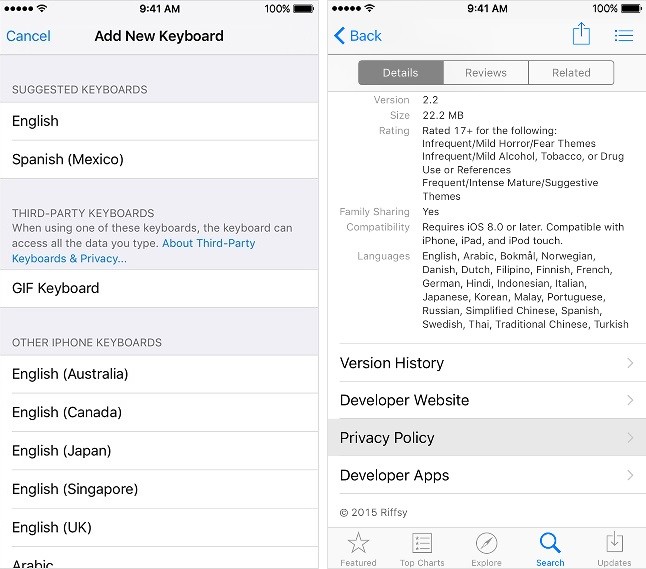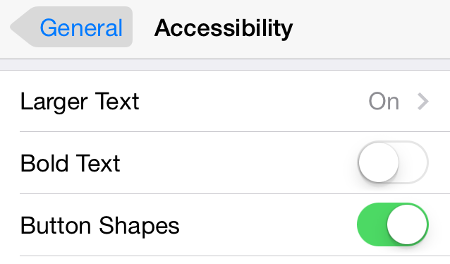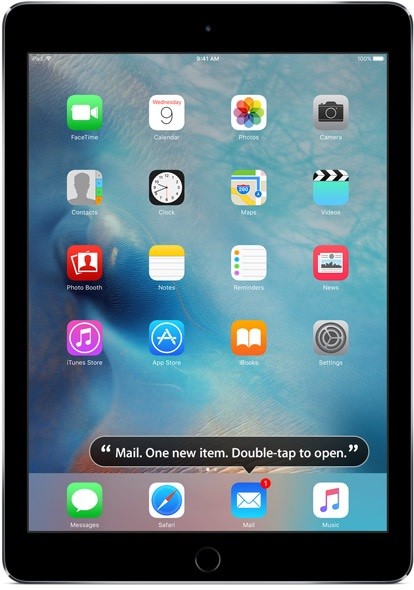Using an iPhone or an iPad isn't rocket science. One of the things that die-hard Apple users love most about them is their combination of powerful computing with simple, easy-to-use functionality.
That's even more pronounced with Apple's new iOS 9 operating system.
In fact, hundreds of thousands of people have decided to ditch their laptops and desktop computers in favor of tablets. Click here to find out if that's a good choice for you.
However, when you pull your Apple gadget out of its shiny package, it's not your personalized gadget yet. For that, you need to tweak some settings to make it your own.
That's why we've created this list of tips and tricks to help you make using your iPad or iPhone easier than it already is. Whether it's making text larger, so it's easier to read, or having your iPhone or iPad speak to you, and points in between, we've got you covered.
Note: If you're not using iOS 9, you should update your Apple iPhone or iPad to it (Settings >> General >> Software Update.) The newest version of iOS has a more helpful Siri, the voice-activated personal assistant; improved battery efficiency; and much more.
1. Make text bigger and bolder
Despite the iPhone's large screen size, and the iPad's larger displays, you know it's not always easy to read the tiny print on those screens. Fortunately, there are a couple of ways to make your Apple display easier to read.If you'd like to make your text bigger, and bolder, here's how to do that: Go to Settings >> General >> Accessibility >> Larger Text >> Larger Accessibility Sizes.
Then, move the slider to adjust the size of the font. To bold the text, tap on the Bold Text button. (See image below.)
Note: To turn on the bold text, you will need to restart your iPhone or iPad.
2. Zoom in for bigger text
There's one more trick I know for making text bigger. Go to Settings >> General >> Accessibility, then turn on Zoom.Then, use three fingers to double tap; then, you can zoom in and out on any application like Mail, Safari, and your Home and Lock screens. This will also work if you want to zoom in on an Instagram photo.
Note: With iOS 9, you can zoom in and out when you're watching videos. To use zoom, just pinch in and out with two fingers, like you do with photos.
3. Keyboard alternatives
If you'd prefer to use a standard keyboard, rather than type directly onto your iPhone's or iPad's touch screen, Apple lets you use keyboards made by other companies, or third-party providers, as long as you're using iOS 8 or iOS 9. Go to Settings >> General >> Keyboard >> Keyboards >> Add a New Keyboard.Note: You can find keyboards in the Komando Shop.
Once you add your keyboard, you'll notice that Apple alerts you, saying that some third-party keyboards only work if you give them full access to your Apple device. Apple doesn't share that information, unless you give your permission.
To do that: Settings >> General >> Keyboard >> Keyboards >> tap on your keyboard.
If you're thinking about buying an iPad, be sure to check out the exclusive Komando Tablet Comparison Charts before you start shopping. You'll find specs on full-size tablets, mini tablets, extra-large tablets and Amazon's Fire tablets.
4. Add button shapes
Another handy feature to make it easier to read is turning on Button Shapes. (Settings >> General >> Accessibility, then turn on Button Shapes.) It adds outlines and shapes to the buttons so you have a better idea of where to press. For example, see the outline around the "General" in the image below.5. Enable captioning
Do you watch TV with Closed Captioning? Those are the written words on the TV screen that match what people on TV shows and on commercials are saying. Closed Captioning is extremely useful if you're hard of hearing, or if you want to enjoy a TV show or movie while everyone else is trying to sleep.Captioning, or Subtitles, is available on most Apple devices using the iOS 9 operating system. It's easy to set up: Go to Settings >> General >> Accessibility. Then, turn on Captioning & Subtitles. You can customize the caption's font, size, type and color.
6. Have your gadget read to you
VoiceOver is a feature we've mentioned in the past, but it bears talking about again. Simply put, VoiceOver reads out loud the words on your Apple device. That includes written content. But it also provides descriptions of what you may not be able to see on the screen.It will read each letter as you're typing a text or email. It will tell you which app button you're touching, who's calling you, how much battery life you've got left, and more.
VoiceOver will read directions to you in maps, have your camera tell you how many people are in your shot, and get spoken photo descriptions. You can write notes and letters on the screen and have VoiceOver translate your messages into text for email and other apps.
To turn it on: Go to Settings >> General >> Accessibility, then turn VoiceOver on. You have the option to practice with VoiceOver, including setting its speaking rate. To use VoiceOver from your iOS device, press three times on the home button.
7. Get better alerts
No matter how much your iPhone buzzes and vibrates, you still miss calls, or don't realize you have unread messages. There are better ways to get your attention, especially if you have trouble hearing.One way is by using your iPhone's LED light to flash, to alert you. To set up LED flashing lights: Go to Settings >> General >> Accessibility. Then, turn on LED Flash for Alerts.
There's another way to get better alerts: custom vibrations. You can set custom vibrations for incoming messages and FaceTime calls.
Go to Settings >> Sounds >> Ringtone >> Vibration. Or, you can go into your contacts list; hit Edit and select the Vibration option for each of your contacts.























